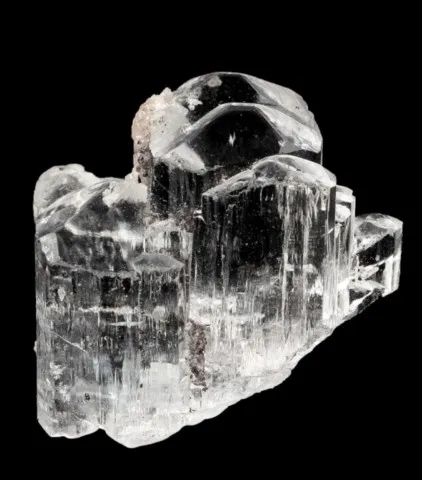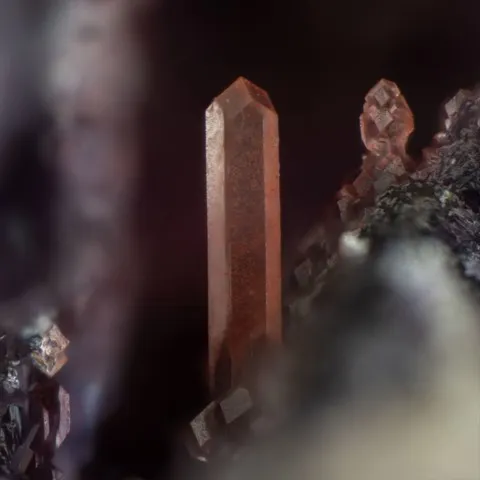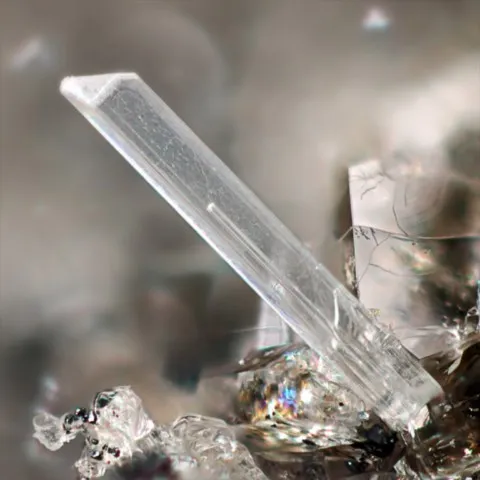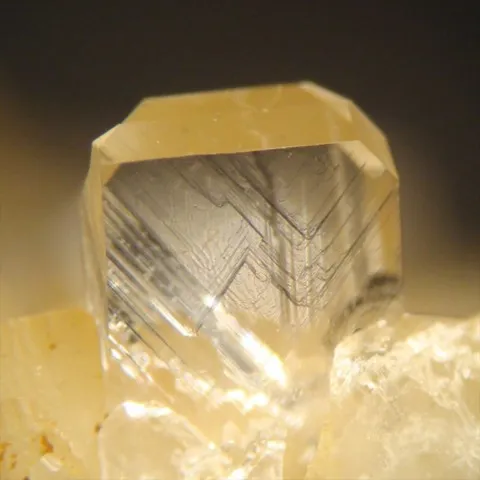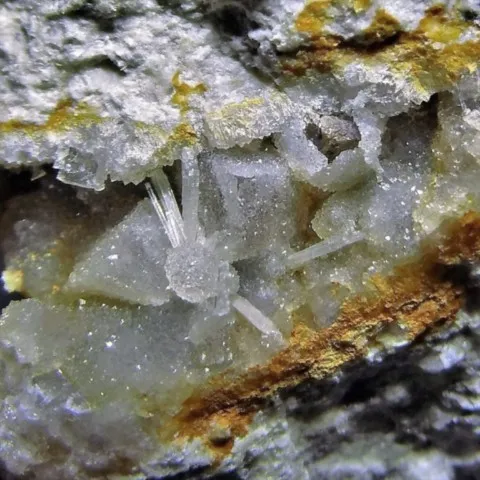SELLAITE
Class : Halides
Subclass : Fluorides
Crystal system : Tetragonal
Chemistry : MgF2
Rarity : Rare
Sellaite is a rare mineral. Its formation context remains subject to discussion, as this mineral is found in varied settings. It is known mainly in bituminous dolomites of cap-rocks, in evaporites and in volcanic fumaroles and blocks rejected by volcanoes. It is also reported in certain marbles and metamorphosed deposits of magnesite as well as in hydrothermal veins with fluorite. It was named in honor of Quintino Sella, Italian mining engineer and mineralogist. Sellaite is known in its occurrences most often in included microcrystals (more rarely in free geodic crystals). It occurs in colorless or white acicular prismatic crystals, sometimes gathered in fibroradiated aggregates. It is a very accessory ore of fluorine.
Main photo : Sellaite from Brumado, Bahia, Brazil © Rob Lavinsky
Sellaite in the World
Twinning
Twinning is known on {011}.
Fakes and treatments
No fakes listed for this mineral species.
Hardness : 5 to 5.5
Density : 3.15
Fracture : Conchoidal
Streak : White
TP : Transparent
RI : 1.378 to 1.390
Birefringence : 0.012
Optical character : Uniaxial +
Pleochroism : None
Fluorescence : Yellow-green
Solubility : Sulfuric acid, water
Magnetism : NoneRadioactivity : None

